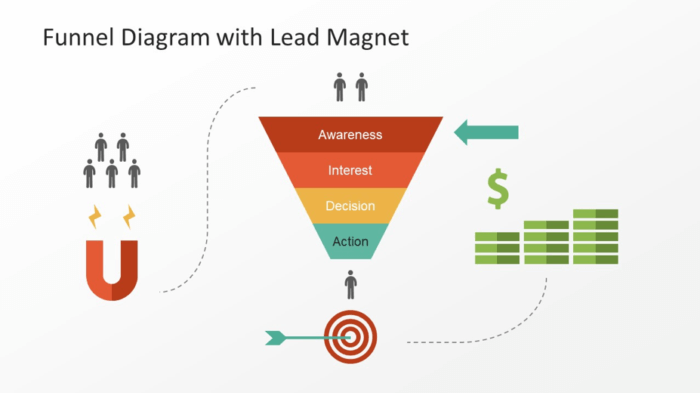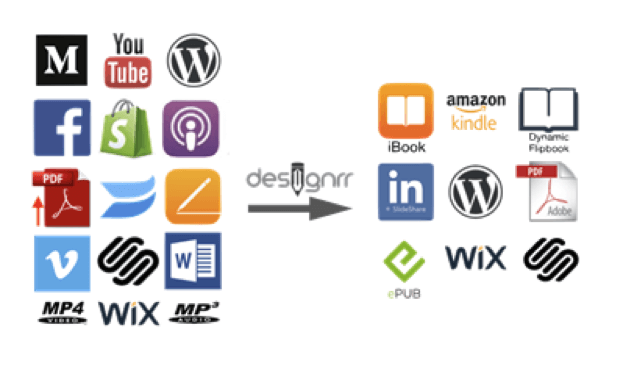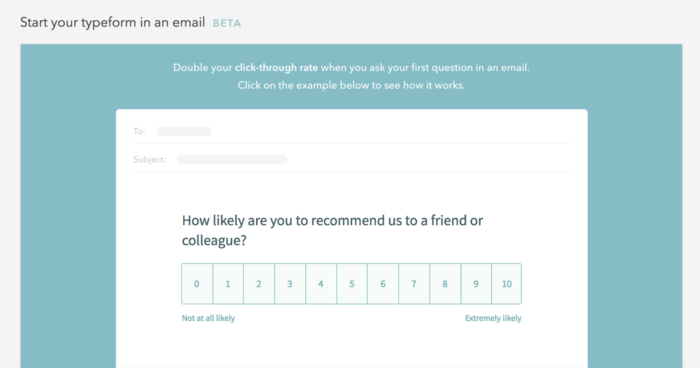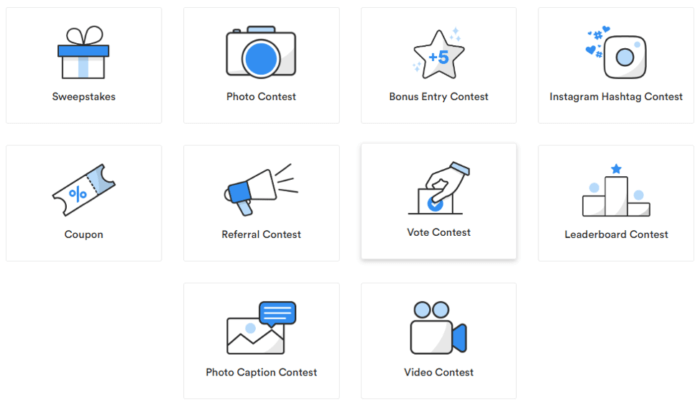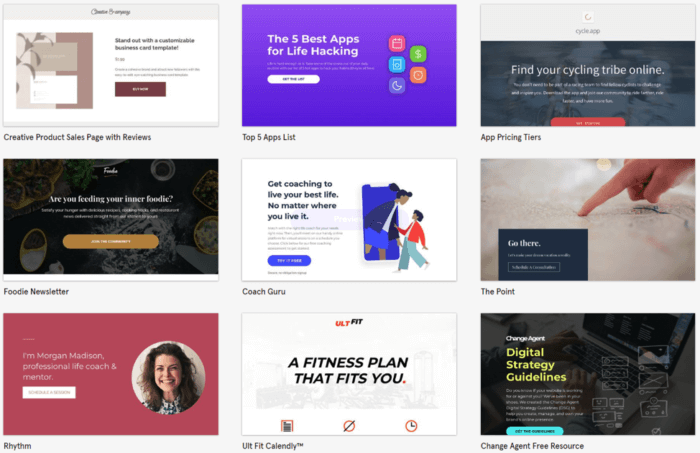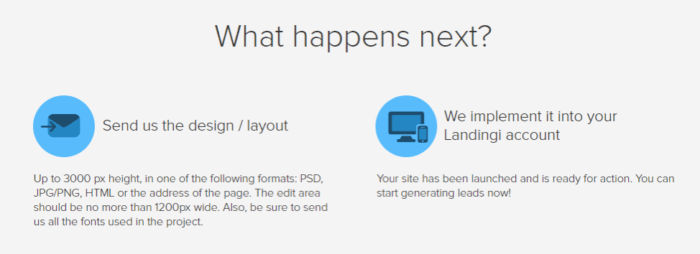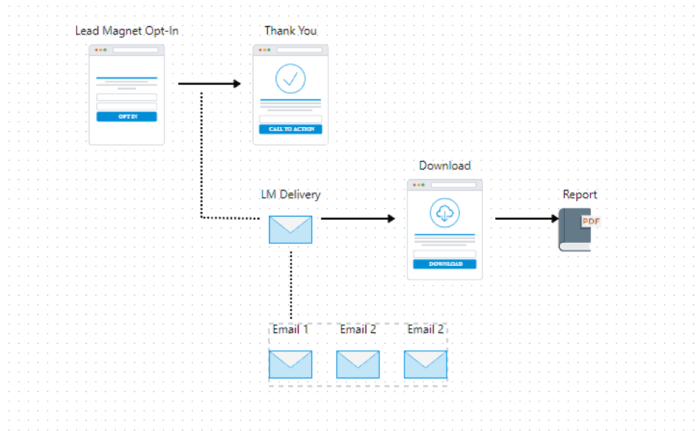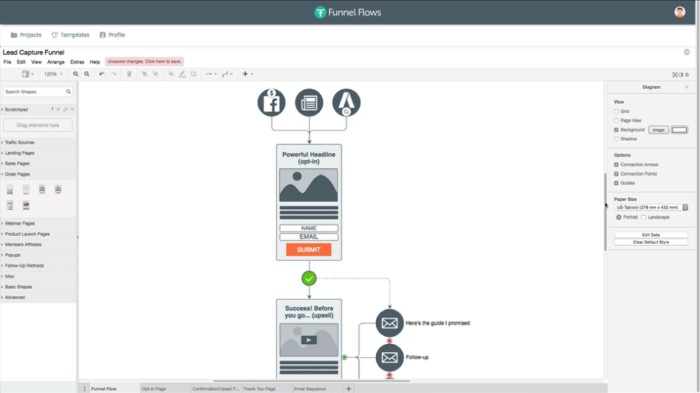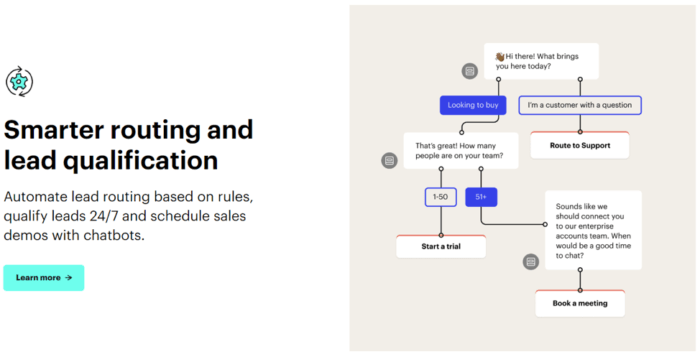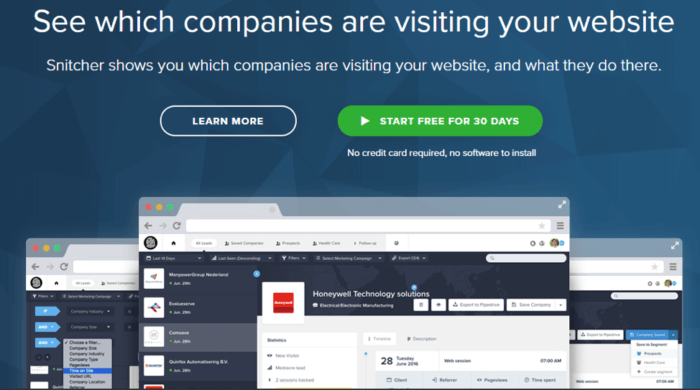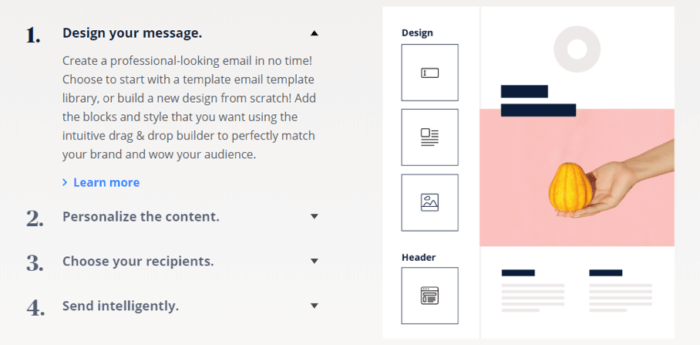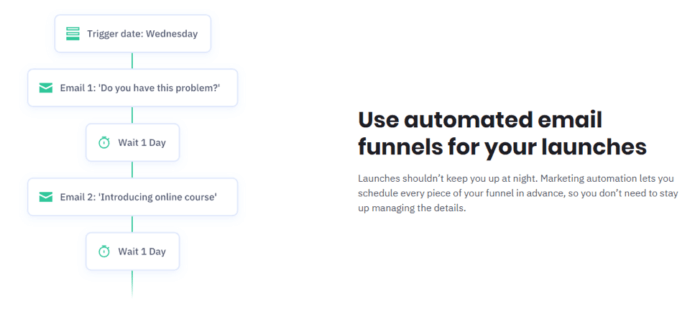A working marketing funnel ensures a steady influx of leads which forms the basis for business growth.
Have you ever been in a situation when you’ve done everything you could to sell your product, but people didn’t buy? You may have a fantastic product, a lot of great ideas and motivation to run your business, but unfortunately, that is not always enough to succeed.
According to Forbes, eight out of ten entrepreneurs who start businesses fail within 18 months. If you don’t want to repeat their fate as a businessman, you need to understand how to sell your product or service. To do that, you need to be able to build an effective marketing funnel.
In a nutshell, the marketing funnel is a model that describes the journey of a customer from the moment they become aware of your company to the point they make a purchase. A working funnel ensures a steady influx of leads which forms the basis for business growth.
In this article, we will share 12 tools you can use to improve your marketing funnel. The tools are sorted into their respective groups to make everything easier to follow.
Tools for creating lead magnets
The average time people spend on a page is only 15 seconds. This means that a big chunk of visitors that are on your site for the first time won’t remember you for long, even if they found the information they came for.
That’s why it’s important to build email lists or pick up other contact info such as telephone numbers. This gives you the ability to follow up with your prospects and lead them through your funnel. What is the best way to get that valuable contact information? The answer is lead magnets.
Over the years, marketers came up with a wide variety of different lead magnets – ebooks, checklist, white papers, quizzes, contests, webinars, to name just a few.
However, great lead magnets don’t just pop-up out of thin air. You need to create them. Luckily, there are a lot of different tools you can use to speed up the process of creating any type of lead magnet we just mentioned.
Here are some of our favourites:
Designrr
Did you ever thought about transforming your blog posts, podcasts or videos into lead magnets but gave up on that idea because it was too much work? You can use Designrr to automate the whole process and quickly create eBooks, Flipbooks, and Transcripts you can use as your next lead magnets.
Canva
Canva is an easy-to-use design tool with templates that will help you create a beautiful checklist, infographic, or promotional material in just a few clicks.
Typeform
If you want to go for something more interactive, you can generate leads with quizzes and surveys. As a nice bonus, the answers you get can help improve your product and segment your email list. One tool you can do that with is Typeform – a beautiful and useful survey creator with a smooth interface and analytics.
Wishpond
If you want to take interactivity to a whole new level and focus more on user-generated content, Wishpond can help you smoothly run a variety of social media contests.
When do you need these tools?
The answer is almost always.
You need incentives to pull visitors into your funnel. All of these tools give you an ability to provide incentives that are strong enough to get that valuable contact info.
A great time to explore your options is if you are in the process of building up your website and you are still unsure what kind of incentives you can or should offer.
For those that have been running their business for a while and want to spice things up, it is never too late to look at different lead magnet ideas and then search for tools that can help you create whatever caught your eye.
Tools for creating landing pages
A landing page can help you build a marketing funnel at every stage. A well-designed landing page can be a perfect tool for both collecting leads and closing sales.
Some marketers don’t believe in landing pages because they haven’t had a reasonable conversion rate or think it takes too long to create one. However, these days you don’t need to hire a designer or developer to build a highly converting landing page.
Leadpages
One of the most robust tools on the market for creating landing pages is Leadpages. It actually offers a variety of different features like:
- Website builder
- Landing page builder
- Pop-ups and alert bars builder
- Facebook Ad builder
In terms of creating landing pages, you will be interested to know that it offers mobile responsive themes, drag and drop page building, unlimited A/B testing, plenty of integrations with popular tools, real-time optimization tips, and a huge base of templates to choose from.
Landingi
If you want a tool which sole focus is landing pages, you can give Landingi a try. When it comes to building landing pages, Landingi boasts very similar features such as simple drag and drop builder, huge list of integrations, split testing, responsive templates, and decent analytics.
You can even send your design files and the team will import it into your Landingi account.
There are a lot of solid landing page builders out there and most of them offer more or less same features. With that in mind, workflow and pricing will play the biggest role in deciding which one is best for you.
When should you create landing pages?
There are two main elements that differentiate a landing page from your run of the mill pop-up offers:
- Landing pages give you more space to work with and build a high-conversion copy.
- Properly built landing pages eliminate unnecessary distractions and keep visitors focused on your unique selling proposition.
Because of these differences, landing pages are more suitable for targeting prospects that are closer to the bottom of your funnel. Why? As you can imagine, it takes more persuasion to convince someone to start a trial or buy a product than to leave you their email address in return for some checklist.
Here are a few additional situations where landing pages can be really useful:
- You can build landing pages that welcome referral traffic generated from affiliate marketing.
- If you are running any type of paid ads like Facebook PPC, you can send warm traffic (people that showed some interest in your product recently) directly to your landing page.
- If you are nurturing your leads using email marketing, the last email that aims to convert them can be used to direct recipients to your landing page.
Funnel mapping tools
Based on the sales funnel diagram, it seems like the funnel has a linear structure. But in reality, the marketing funnel is not that simple.
People are attacked by tons of information every day. When they come across your product, they might want to see and try other options. It might take weeks or even months before potential clients get back to your funnel and make a purchase. Things get messy over time, and this is where funnel mapping can help.
Simply put, funnel mapping is just a visual representation of your sales funnel. This representation includes everything:
- The stages of your funnel
- Lead magnets
- Landing pages
- Traffic sources and more
Let’s take a closer look at some of the best tools for funnel mapping out there.
Funnelytics
Creating a funnel may sound easy at first, but the devil is in the details. Try Funnelytics – an app that allows you to design your sales funnel with a drag and drop feature. You can use templates of marketing funnels and customize them.
Funnelflows
Funnelflows is another neat tool that can help you build and visualize your marketing funnels. What separates it from similar mind-mapping tools is that it is built specifically for this purpose. You can use a wide variety of premade elements to quickly visualize any type of marketing funnel.
When do you need to visualize your funnel?
While many marketers will at least outline their funnels on a piece of paper or a whiteboard, sometimes that isn’t enough.
If you need to build a complex funnel with a lot of branching, building an accurate visual representation can point you to potential problems, as well as give you ideas on how to further optimize the whole process.
On top of that, having it in a digital format allows for easier sharing and collaboration with both clients and different team members.
Lead generation tools
Those of you who are looking to increase sales need to focus on generating more qualified leads.
Lead generation is the very first step in your interaction with potential clients. This process helps you identify people who are interested in the product or service you offer. However, you need to remember that leads are not customers – just have the potential to become one.
There are a lot of different tools and ways to generate leads. We will mention here two that you might not think as lead generation tools at first, but they can definitely be used for it.
Intercom
The first tool we want to mention is Intercom. While many businesses use live chat only as a support mechanism, it can be used to generate new leads from unsuspecting visitors. Intercom is especial good in doing that as you can use complex automated messages and conditional logic to answer possible questions and get them interested in your product/service.
Snitcher
Another interesting tool used for lead generation you can give a try is Snitcher.
Snitcher integrates with your Google Analytics account to retroactively identify who has visited your site, how they found it, and give you an idea of what they were looking for. It also gives you an ability to segment those visitors based on their company’s attributes and actions they performed on your website.
However, keep in mind that people who did not directly leave you their contact information often aren’t ready to buy so be very careful how you approach them. If you are too pushy, it is likely you will never get a response.
If you have trouble generating new leads, here are 60 more ideas on how to do exactly that.
Do you need lead generation tools?
This one is a bit harder to answer. On one side, almost everybody needs tools to help them generate new leads. On the other side, the definition of lead generation tools is kind of loose, so it is hard to pinpoint all the variety of tools that can be counted as lead generation tools.
A better question would probably be: Which tools should you use to generate leads? To answer that, you first need to decide how you want to generate leads and which channel you want to focus on. When you can answer that, you can simply search for tools that match your needs.
Email automation tools
How often do you use emails to interact with your customers? Do you notify them about new products, features, and useful guides? Do you wish them a happy birthday? Emails can help you increase conversions in by more than 14%.
This leads us to email marketing automation funnels which can come in several different variations:
- Autoresponders
- Nurture sequences
- Email sequences
- Automated email follow-ups
Despite their minor differences, the core principle remains the same. The email sequences start based on triggers – when a particular action is taken (someone subscribes, clicks on a link in the previous email, etc.).
For instance, when a person requests a freebie or uses the contact form. Email automation allows you to build a relationship with potential clients by educating them about your product and sending them all kinds of useful content (e.g. whitepapers).
In essence, email automation is a crucial part of email marketing as it allows you to basically automate your whole lead nurturing process.
SendinBlue
SendinBlue is a powerful email automation software that enables you to send the right message at the right time. You can quickly build great looking emails, use their machine-learning algorithm to decide when is the best time to send them, track analytics, and more.
ActiveCampaign
ActiveCampaign is another popular marketing tool used by over 60,000 companies, from bloggers to big corporations all over the globe.
With ActiveCampaign you can also send personalized emails, create triggers for emails based on events like email opens and link clicks, organize your sales information, and set-up your whole nurturing sequence.
When is the time to invest in email automation tools?
Nurturing your leads by building automatic email sequences can be a great alternative to doing it through paid advertisement.
The idea behind it is simple – the welcome email triggers after they opt-in for one of your lead magnets. You send a series of emails that tells them a bit more about your brand and delivers another piece of useful content.
The trick is that this additional content is aimed at solving the problems your leads have further down your sales funnel. If everything goes according to plan, they will be interested enough to click on the CTA in the last email you send them as a part of the email sequence.
If that sounds like something you want to try out, you will need to invest in email automation tools.
Here are a few additional situations in which email automation tools are necessary:
- You plan to run weekly or monthly email newsletters.
- You are starting an online store and plan to build an email list to notify people about offers like discounts and contests.
- Any time when your sales funnel is not based strictly on paid advertising you will need an email automation tool (if for nothing else than at least to send people the content they opted-in for).
Over to you
Building a sustainable funnel involves a lot of testing and you will almost never get it right on your first try. Luckily, there are plenty of tools on the market that can help you optimize this process by solving specific problems you encounter at different stages of the funnel.
What tools have you tried in the past? Share your experience with us in the comment field below.

